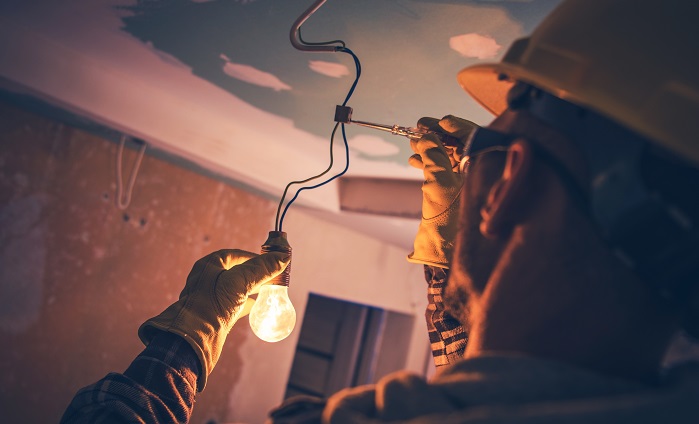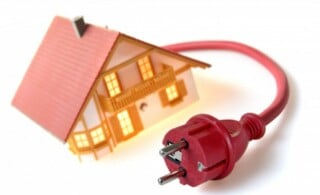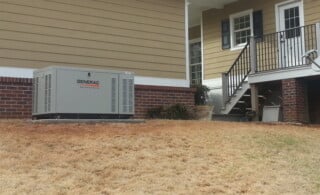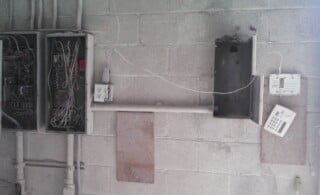
Maybe you’ve just bought a new home and are quickly discovering the little idiosyncrasies and “charms” of older electrical circuits in your home. Or maybe you’ve started a do-it-yourself project and are realizing you may have bitten off more than you can chew.
Electrical circuits can be some of the most detailed home projects, and without the proper knowledge it can be a tough project to tackle. For big problems, it is best to search for an electrician near you who is knowledgeable and will be able to find a solution.
If you want to give it a shot yourself before contacting a pro, there are a couple things you should know.
What Are Electrical Circuits?
Before you put “electrical repair near me” in your favorite search engine, let’s make sure you understand what you’re looking for.
When you walk in the house or into a room, you probably don’t think too much about what happens when you flip a switch and the entire room fills with light. It seems like that switch created light, but it only completed what was already there: a circuit.
So, what is a circuit and how do circuits work? Before we get too deep into it, we need to differentiate between the two types of circuits.
1. Power Circuits
If you need to transfer electricity as well as control it, you need a power circuit.
When you install electrical wiring, this transfer is what you’re trying to accomplish. These are like the wiring systems in your residential home, but they can be as big as the power lines outside.
If a large amount of electricity needs to be transferred and controlled, you’ll need power circuits to do it.
2. Electronic Circuits
Whereas power circuits are great for transferring and controlling electricity, they can’t do the same for information.
That’s where electronic circuits come in. They come in many shapes and sizes. In fact, you probably have electrical circuits in your pocket right now. Cell phones are a perfect example of electronic circuits because of the amount of information flowing through that cell phone every day.
What Is a Circuit?
Now that we’ve made the distinction between a power circuit and an electronic circuit, what is a circuit anyway?
In short, an electrical circuit is simply a pathway through which an electrical signal can travel. If electrons are allowed to travel from their source to their destination, your lights will light, your oven will heat, and your toaster will toast.
Circuits can be open or closed, leading to opposite results.
If a circuit is closed, it will allow an electrical current to pass through. If the circuit is open, the electrical charge is stopped from completing the circuit, and the switch is turned “off.”
Circuits are made of four parts:
- Conductors: Wires, usually copper, that make the path electricity flows through.
- Switch: A gap in the circuit. Once closed the circuit will be complete, and electricity will flow.
- The Load: AKA resistor, the load is a buzzer or light bulb that indicates the circuit is closed.
- Cell: The power source.
What Does It Mean When a Circuit Is Broken?
Just for the purpose of answering this question, picture a circuit as a circular train track. For the train to travel around that track, the track has to be continuous. Any break in the track and the train cannot continue.
The same is true for circuit. If the switch is closed (connected), power can flow along the circuit from the load, through the conductors and to the destination. If there is any break in the circuit, electricity cannot flow.
Current, Voltage, and Resistance
- Current is how electricity flows through your house, phone, car, etc. Electrons moving through wire is called an electric current.
- Voltage is like current but travels in the opposite direction from the electrons. Electrons move from a negative charge to a positive, while voltage moves from positive to negative.
Measuring Current, Voltage, and Resistance
To measure current, which is measured in ampere meter or ammeter, follow the following steps.
- Connect a dry cell and a light bulb.
- Connect the positive terminal to the negative terminal.
- Measure the ammeters flowing through the bulb.
To measure voltage, you’ll need a voltmeter, and the process is like that of measuring current.
- Connect a dry cell and a light bulb.
- Wire the voltmeter in parallel with the light bulb.
- Connect the positive terminal of the dry cell to the positive terminal of the voltmeter and do the same for the negative.
To measure resistance, you’ll need a multimeter or a test meter, and you’ll need to follow these steps.
- Turn the face dial to a position for required measuring, resistance.
- Touch the terminals of the multimeter.
- Adjust the meter range to 0.
- Touch the terminals of the meter to measure resistance and take the reading.
Static Electricity
Static electricity is a perfect example of the fact that all things have electric charges. For instance, when you rub two things together, electricity is generated. These items held the potential for an electric charge, but required some manipulation for that potential to become reality.
When you rub certain things together, electrons are released from their atoms in one material, with the other material gaining a positive charge. That causes the free electrons, which have a negative charge, to move to the other material. When you feel that “shock,” you are experiencing that movement.
More Resources:
- Understanding Electric Current
- The Fundamentals of Electricity
- Tesla: Master of Lightning
- Understanding Your Home Electrical System
- Electric Currents: Water in Pipes Analogy
- Making Sense of Voltage
- Measuring Electricity
- History of Electrical Charge and Current
- Voltage and Current
- Electricity Games
- Electric Currents
- Electric Basics
- Understanding Your Circuit
- Electrons to Light Bulbs
- Electrical in Construction
- Potato Power
- Electric Current
- Alternating Current
- What is an Electric Current?
- Electrical System
- Common Misunderstandings of Electricity
- How the Electricity Grid Works
- Understanding a Home’s Electrical System
- Who Discovered Electricity?
 Staying Safe During a Home Power Outage
Staying Safe During a Home Power Outage  About Generator Power
About Generator Power  Powerful Electrical Upgrades
Powerful Electrical Upgrades  Tips for Finding & Hiring an Electrician
Tips for Finding & Hiring an Electrician  Electrical Box Regulations – Is There a Fire Hazard in Your Walls?
Electrical Box Regulations – Is There a Fire Hazard in Your Walls? 

Are You Familiar With This Topic? Share Your Experience.